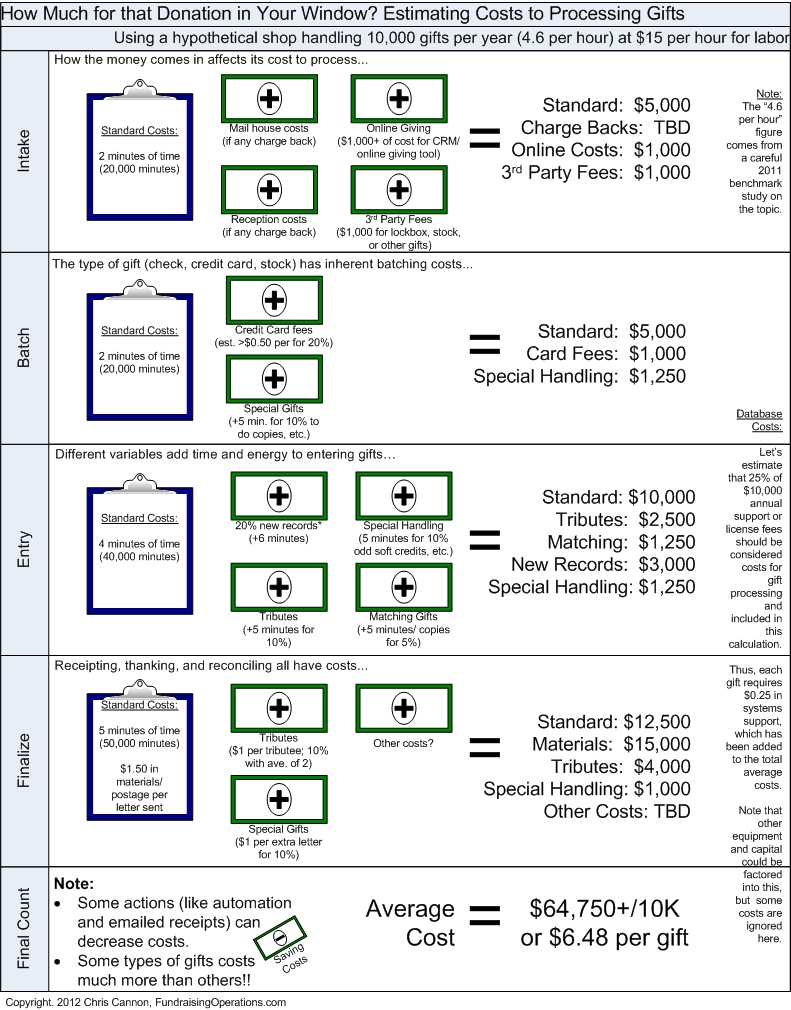I get this question a lot: how much should it cost to process a gift? It’s a valid question most easily handled with: “It depends.” Well, I’m tired of that answer so I’ve devised a calculation. My math is not as important as your organization’s math, but we should all be more focused on how to deliver more resources to forward our missions (i.e., streamline costs and/or increase revenues).
What are the costs of processing a gift or pledge? The components vary, by gift type, organization type, and others. The main cost is staff time, but we should also include a portion of the database costs, any services or service fees, and the materials/resources involved.
With costs estimated, how do these costs accumulate? Gift processing has four stages–intake, batching, entry, and finalization–so I’ve explored each to give a sense of costs per stage:
- Intake: how the gift comes in affects costs.
- Batching: the type of gift and associated information should be factored in.
- Entry: some gifts take a lot longer to enter than others.
- Finalization: receipts, thank yous, and reconciliation all take time and money.
Of course, every organization will differ in the actual calculation. That’s part of what makes this such a hard number to determine. Have a look at this infographic that calculates the cost to process each gift:

The bottom line is that all gifts cost time, energy, and resources to process. Is your cost $6.50 per gift? Is it much more? Less? If your team is too efficient, you may be missing stewardship or quality control opportunities. Below some level, a gift costs an organization money. That number is probably closer to $20 for some gifts (tributes) than anyone would like to admit, especially if your team processes thousands of $20 gifts. The nature of philanthropy makes it nearly impossible (and certainly un-palatable) to reject small gifts, but messaging around the impact of giving could switch from the overly naive “every dollar counts” notion to something more sophisticated. So, be sure your efforts are pointing donors in the right direction.
Don’t take my word for it. Do the math. Then, with your organization’s answer(s), try to shape donor behaviors through smarter direct response strategies supported by streamlining your operations so that you deliver as much money as possible to support your mission.
And, please share your calculations and ideas in the comments.